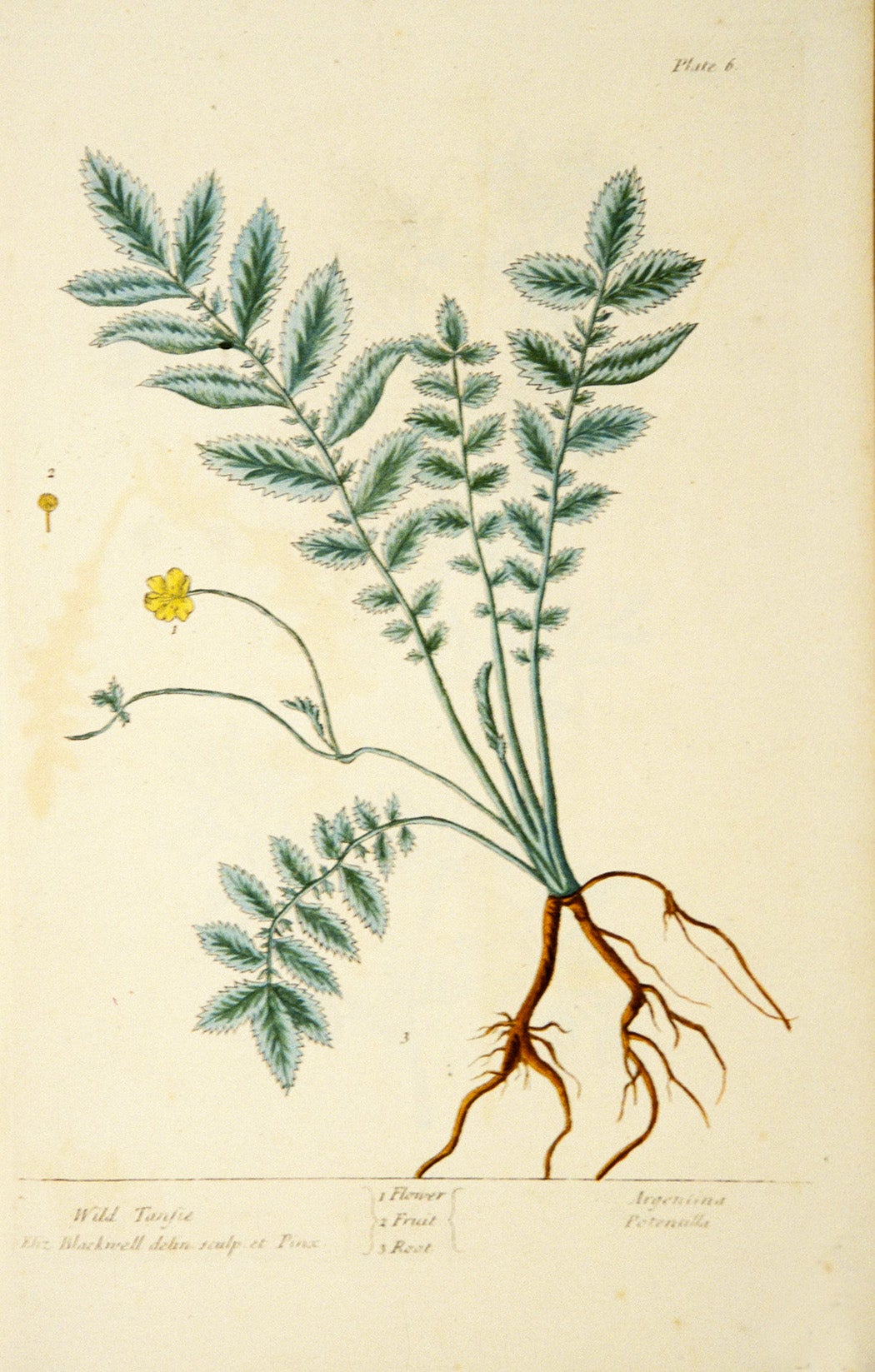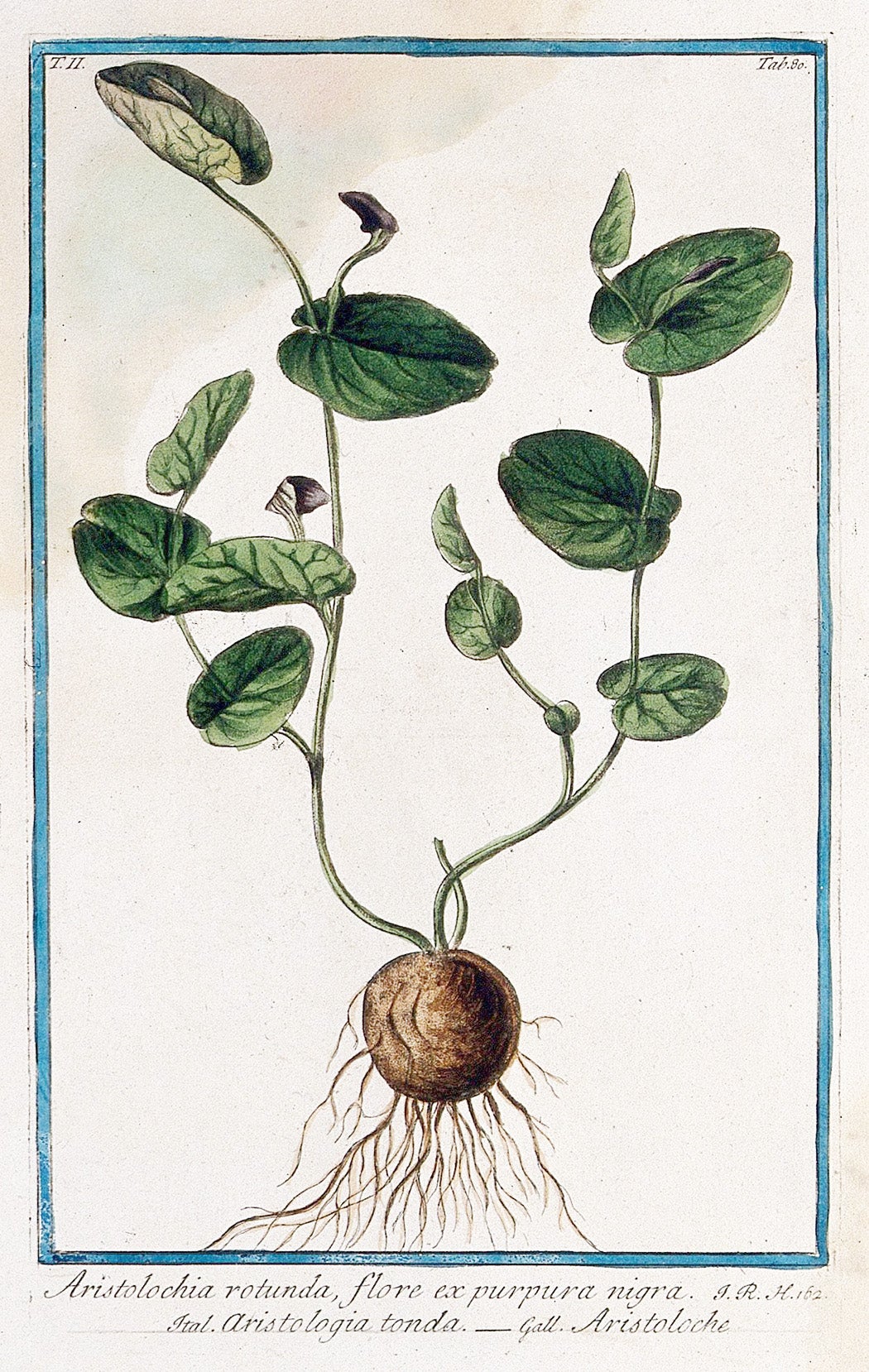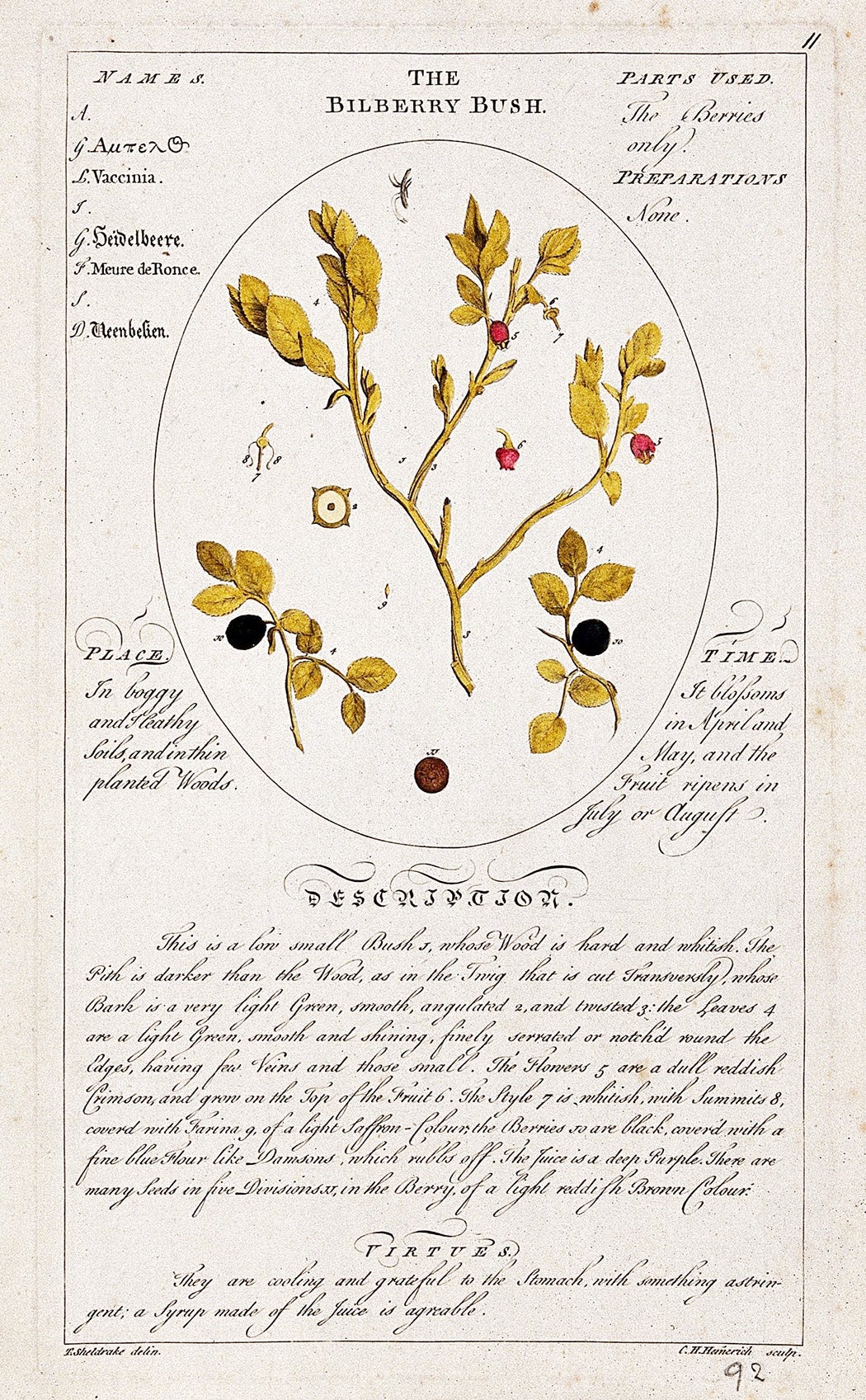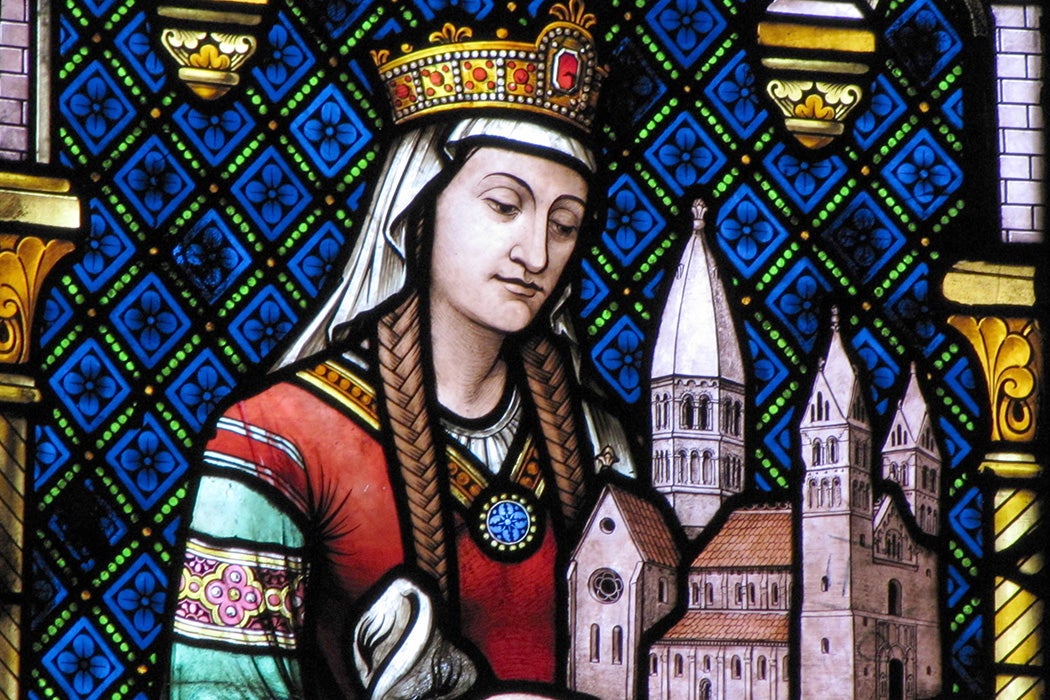Hildegard von Bingen (b. 1098), a German nun, was a woman of many talents: abbess, composer, mystic, writer, philosopher, and, perhaps most surprisingly, medical provider. And although it may sound implausible to the modern ear, Hildegard the Catholic nun—who is now sainted—also prescribed medicinal abortions.
In the medieval era, monasteries served as proto-hospitals, with nuns and monks tending injured and ill community members, soldiers, and travelers. Hildegard’s parents had tithed their tenth child to the church, so at age 14 she was sent off to a double monastery (housing men and women) in the Lower Rhine region. It’s likely she was trained as a worker in their infirmary.
Weekly Newsletter
Hildegard published several works on religion and science. She is believed to have begun writing her two massive medical texts, Physica and Causae et Curae, around 1150. In the books, Hildegard makes 437 claims of medicinal uses for 175 different plants. She describes the use of several botanical emmenagogues (menstruation stimulators) and abortifacients: asarum, white hellebore, feverfew, tansy, oleaster, farn.
In the case of asarum, also known as European wild ginger or wild spikenard, she explains: “A pregnant woman will eat it, either on account she languishes or she aborts an infant which is a danger to her body, or if she has not had a menstrual period for a time period so that it hurts.”
Hildegard prescribed other treatments specifically for “retention of the menses:” A bath of fresh river water heated with warm tiles and filled with tansy or chrysanthemum, mullein, and feverfew. The bath should fully cover the belly. Tansy is a well-known abortifacient. In addition to the bath, the person should “take rifelbere [barberry] and one-third as much yarrow, aristologia, and about one-ninth as much yue, and crush this mixture in a mortar. Put it in a little bag and then cook it in wine; add clove and white pepper (a little less white pepper than clove) and honey. Drink this daily both fasting and with meals… for five days or fifteen or until the matter is resolved.”
Many of the plants Hildegard mentions have been proven by modern pharmacological studies to be effective at bringing on menstruation or abortion, though it’s important to note that medieval preparations and dosages have not been replicated exactly.

Blocked menses was seen as a problem in humoral medicine. And just like other types of bodily blockages (bowels, for instance), it required unblocking. A regular period was a necessary monthly expulsion of evil humors. Retention could cause “suffocation of the matrix.” Some scholars argue that treating retained menses was always about treating amenorrhea, in hopes of increasing fertility. But it’s very likely people also used these methods to end unwanted pregnancies.
“That the herbs widely advocated to stimulate healthy menstruation were also reputed to cause abortion created a zone of opportunity for women who resolved to terminate a pregnancy,” the historian Etienne van de Walle wrote in The Journal of Interdisciplinary History.
Prescriptions for birth control or abortion methods were widely circulated among medical professionals and also regularly appeared in household recipe books. The first century pharmaceutical text De Materia Medica, by the Greek physician Pedanius Dioscorides, lists 959 substances, 141 of which are noted to bring on menstruation, 49 to expel an embryo, 18 to terminate an embryo, and six to “cause abortion.” Such recipes regularly appeared in medical books throughout the medieval era, which suggests that abortion was considered a routine healthcare procedure.
Although these written medical texts are all that remain of women’s medical care during this period, much of the knowledge would also have been passed down orally from woman to woman, across generations. “[T]he presence of folkloric knowledge regarding the female body as well as the need to control the body’s reproductive purpose are difficult to ignore, particularly in light of many sources which seek to ‘move the menses’ or evacuate the womb,” writes Lydia Harris, a historian specializing in abortion and contraception in medieval Europe. It’s believed that Hildegard learned what she knew about the medicinal properties of botanicals, tinctures, stones, and animal parts not only from her superiors at the monastery, but from nearby folk healers and herbalists. That’s because her texts mix the Latin of traditional medicine with a healthy dose of German terms and folkloric wisdom.

At age 50, she decided to move north to Bingen on the Rhine and have a new monastery built for her. She would go on to spend 30 years as an abbess there. This is where she wrote her medical books and where she became a renowned medical practitioner.
“According to the monk Theodoric, who was an eye witness, she had to so high a degree the gift of healing that no sick person had recourse to her without being restored to health,” wrote the physician F. A. Reuss in the introduction to his 1855 translation of Physica. “It is certain that Hildegard was acquainted with many things of which the doctors of the Middle Ages were ignorant.”
If these medical handbooks offer a peek into the practice of abortion in medieval Europe, then laws and religious texts can tell us more about what society thought of abortion in theory. Opinions on abortion and contraception were as varied in the medieval era as they are now. Officially, the church considered ending a pregnancy a sin, though if done before the fetus was “formed” or “ensouled”—once the pregnant woman senses fetal movement, known as the “quickening”—it was a much lesser sin than a late-term abortion. Often, “quickening” meant the difference between one year of penance or three.
“From the earliest Christian times, churchmen had inveighed in vain against both contraception and abortion, and there is no doubt that common herbs with effective contraceptive and abortifacient properties were well known throughout early medieval Europe,” the historian Julia M. H. Smith writes in Europe After Rome: A New Cultural History 500-1000.
What’s unclear is how far these teachings trickled down through the ecclesiastical hierarchy. Did these dogmas make it into the sermons or guidance of local parish priests? Though fervently against abortion, one early church father preached the surprisingly progressive stance that sex workers shouldn’t be condemned for having abortions; her clients were to blame, not her. “For even if the daring deed be hers, yet the causing of it is thine,” Father John Chrysostom proclaimed in his Homily 24.
In the early and late middle ages, several secular law codes throughout Europe also punished abortions, but likewise typically considered how far along the pregnancy was and whether the woman’s life was threatened. Lawmakers also felt it was necessary to punish women who maliciously deprived their husbands of an heir. It was a wife’s duty to provide her husband with progeny; sabotaging that obligation couldn’t go unpunished. Overall, laws tended to be more concerned with another party causing the termination of a wanted pregnancy, either through coercion, poison, or assault.

“Both intentional and violent abortion happened and were punished, but not always in the same way and to the same extent,” medieval scholar Marianne Elsakkers explains.
Women were largely the ones penalized. According to Elsakkers, several Old Frisian laws “explicitly associate women with poisoning, knowledge of herbs, remedies and recipes, and finally the female witnesses.” Similarly, Old Germanic laws “imply that women were the ones who knew the recipes for abortifacients, and that fertility management was usually women’s business.” But at least one law suggests “husbands could be involved in intentional abortion, and that they may have agreed to the procedure, or forced or pressured their wives into having an abortion.”
Abortifacient herbs were not without their risks. Depending on the dosage, there could be a fine line between efficacious and harmful. An overdose of asarum, for instance, can lead to paralysis; too much yew can cause heart problems or death. Many medieval laws regulated the supply of herbs classed as potentially poisonous. The fact that medieval laws and church texts address abortion suggests that it was a common enough occurrence to warrant mentioning and codifying, though just how often abortion occurred in the medieval era is impossible to determine. Lacking official data on abortions, historians must consider the fact that there likely was a gap between what the law declared and what happened in society.
“It is difficult to determine how much influence theologians actually had over the reproductive practices of medieval women, if they actually had any at all,” Harris concluded in an article in Medieval Feminist Forum: A Journal of Gender and Sexuality. Just how much sway official religious and legal doctrine had over what actually happened between practitioner and patient is tough to parse. Outside of monasteries, medicine was primarily practiced in the domestic realm, most often by the women of the house or by lay folk healers. Knowledge of basic medical treatments was an essential element of women’s household management. Most midwives were women, so their work faced less oversight than that of university-trained male physicians. The relative invisibility of women practitioners and patients rendered regulation of their interactions virtually impossible.
Elsakkers asserts that “in many cases probably no one else besides the pregnant woman and her (female) helpers would ever know about the abortion. It seems that resourceful women would have been aware of how their bodies worked, they would have known what to do, and whom to consult, when coping with an unplanned or unwanted pregnancy.”

And just like in modern times, wealth and power meant greater access to abortions. Ladies of the court had storied apothecaries at their disposal, while the poor had to do with whatever they could glean or procure from folk healers.
“[M]edical treatises produced by and for wealthy Christian women across the Middle Ages… had a host of pharmaceutical contraceptives, various practices for inducing miscarriages, and surgical procedures for the termination of pregnancies,” historian Roland Betancourt writes in Scientific American. “[W]ealthy and elite Christian women had not only recourse to the best medical knowledge of their era but also the privacy to undertake these practices without shame.”
It may seem hard to square Hildegardean medicine with the religious beliefs she professed: a saintly Christian woman healer describing abortifacients. But Betancort assures us this was the norm: “When it came to saving a woman’s life, Christian physicians unhesitatingly recommended these procedures.”
Hildegard may indeed be a continuation of the tradition of saintly reproductive medical care. After examining hagiographies and other texts from 5th through 8th century Ireland, religion historian Maeve Callan concluded: “These accounts celebrate saints who perform abortions, restore female fornicators to a virginal state, contemplate infanticide, and result from incest and other ‘illegitimate’ sexual unions. Moreover, the texts themselves generally reflect a remarkably permissive attitude toward these traditionally taboo acts, an attitude also found in Irish penitentials and law codes.”
Medical providers understood that uterine diseases, pelvic malformations, age (too young or too old), and other issues could cause premature or difficult births that would endanger women’s lives. The loss of the fetus was seen as an acceptable price to pay for saving the life of the pregnant woman. The fourth-century medical writer Theodorus Priscianus likened abortion to pruning the branches of a tree or ejecting the cargo of an overladen boat during a storm.
“The overall consensus, although officially against any form of controlling procreation, was also sympathetic to the dangers that awaited women and the social implications that the loss of a mother would have had on a family structure if she were to die from an unwanted pregnancy,” Harris noted.
These views would have informed Hildegard’s ethos. Gestational age and, with it, “ensoulment” or “quickening” of the fetus were taken into consideration, but medieval practitioners prioritized the health and well-being of the pregnant woman.
Support JSTOR Daily! Join our new membership program on Patreon today.
Editor’s note: This article’s usage has been updated to reflect the idea that pregnant women are not necessarily mothers and to correct the translation of Rifelbeere.







